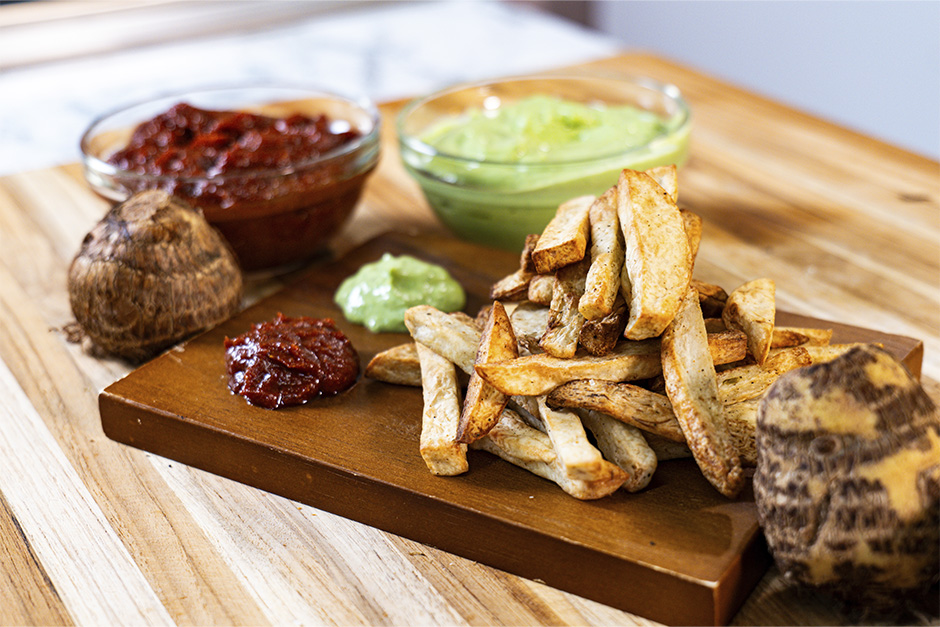Polynesian in origin, taro is grown for its large, starchy, spherical corms (underground stems), commonly known as “taro root,” which are consumed as a cooked vegetable and made into puddings and bread. It is also what Polynesian poi is made of, a thin, pasty, mass of fresh or fermented taro starch. The large leaves of the taro are commonly stewed.
In its raw form, the plant is toxic due to the presence of calcium oxalate and needle-shaped raphides* in the plant cells. However, the toxin can be minimized and the tuber rendered palatable by cooking.
*Raphide is a term for needle-like crystals found in some plants that cause irritation and inflammation in the oral and gastrointestinal tract.
The Lowdown
Season
Fall
Summer
Spring
Select
Make sure the root does not contain mold, blemishes, or soft patches, is solid for its size, and has good color.
Store
Store taro in a dark, cool place and avoid storing taro in the refrigerator.

